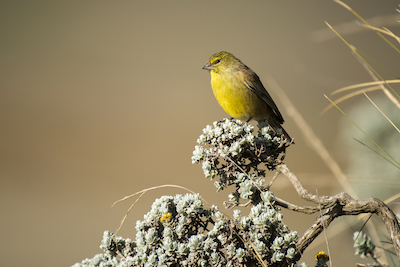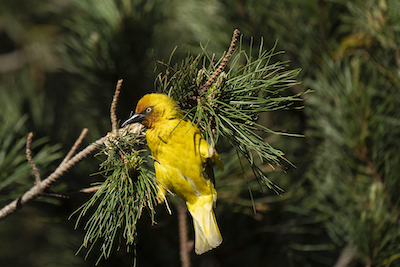Lesotho is a highly rewarding ornithological destination. Despite being one of the smallest countries in Africa, it boasts a checklist of 350 bird species, and is the best place in the world to tick a number of alluring specials endemic to the upper reaches of a biodiversity hotspot known as the Drakensberg Alpine Centre.
 High-altitude specials whose range is centred on Lesotho include the Drakensberg rockjumper, a handsome orange-breasted bird often seen running and hopping between boulders around Sani Top and Bokong Nature Reserve, and the conspicuously vocal and rather canary-like Drakensberg siskin.
High-altitude specials whose range is centred on Lesotho include the Drakensberg rockjumper, a handsome orange-breasted bird often seen running and hopping between boulders around Sani Top and Bokong Nature Reserve, and the conspicuously vocal and rather canary-like Drakensberg siskin.
Lesotho and the neighbouring uKhahlamba-Drakensberg region of South Africa also form the core range of a number of whose range is restricted to Lesotho, South Africa and/or Swaziland. Most conspicuous among these, often seen foraging in small flocks in open grassland, is the striking southern bald ibis, but look out too for the ground woodpecker, yellow-breasted pipit, mountain pipit, buff-streaked chat and bush blackcap.
 Gurney’s sugarbird, one of two species assigned to a bird family unique to Southern Africa, is a striking highland nectarivore with a longish tail, russet breast band, bright yellow vent and heavily curved bill. It is most likely to be seen feeding on with flowering proteas, aloes and red-hot-pokers, often alongside the malachite sunbird, a spectacular long-tailed nectarivore with iridescent green feathering.
Gurney’s sugarbird, one of two species assigned to a bird family unique to Southern Africa, is a striking highland nectarivore with a longish tail, russet breast band, bright yellow vent and heavily curved bill. It is most likely to be seen feeding on with flowering proteas, aloes and red-hot-pokers, often alongside the malachite sunbird, a spectacular long-tailed nectarivore with iridescent green feathering.
Other Southern African endemics likely to be encountered in parts of Lesotho include grey-winged francolin, forest buzzard, large-billed lark, African rock pipit, yellow-breasted pipit, chorister robin-chat, buff-streaked chat, sentinel rock thrush, pied starling, southern double-collared sunbird, greater double-collared sunbird, Cape weaver and forest canary.
The craggy escarpments of Lesotho form an important breeding site for cliff-nesters such as jackal buzzard, Cape vulture, Alpine swift and red-winged starling. These cliffs also support the southern hemisphere’s only viable breeding population of the bearded vulture, a massive raptor with a 2.75-metre wingspan and a unique habit of dropping bones from a great height onto a rock slab to crack them open to eat the marrow.
For those seeking highland specials, Sani Top is probably the most rewarding individual site in Lesotho (indeed, Roberts Bird Guide ranks it and the associated Sani Pass among the top ten birdwatching localities in South Africa/Lesotho). Bokong Nature Reserve and Sehlabathebe National Park are also excellent for high-altitude species, while Lake Letsie excels for wetland birds and Ts'ehlanyane National Park is strong on woodland dwellers.
